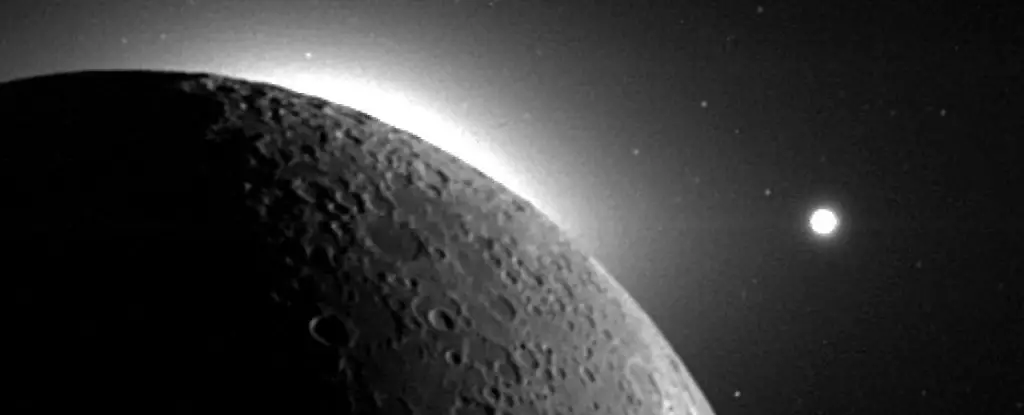The Earth-Moon system stands as one of the Solar System’s most remarkable and distinctive configurations. Unlike other celestial bodies that either boast multiple moons or none at all, Earth’s significant and singular satellite, the Moon, raises compelling questions about its origins. Understanding this relationship goes beyond mere curiosity; it invites us to explore planetary evolution and the diverse dynamics within our Solar System. Currently, the prevailing idea is that the Moon either originated from Earth itself or formed alongside it from a common source. However, innovative research challenges this notion, suggesting alternative pathways for the Moon’s existence, including theories of gravitational capture.
In recent studies led by astronomers Darren Williams and Michael Zugger from Pennsylvania State University, a provocative hypothesis has emerged: could the Moon be a gravitationally captured body from elsewhere in the Solar System? While the traditional view links the Moon’s composition closely to Earth, recent mathematical modeling reveals the plausible scenario of capturing a celestial body passing Earth. This alternative conception could reshape our understanding not only of the Earth-Moon relationship but also of planetary systems in general.
The cornerstone of the traditional Giant Impact Hypothesis is the assertion that a colossal object colliding with the early Earth created debris that ultimately formed the Moon. Both Earth and Moon share astonishingly similar mineral compositions, lending credence to this widely accepted theory. However, researchers are now exploring a range of possibilities for these significant similarities, which could include formation in a common gaseous cloud or through the intersection of a vaporized rock formation.
Gravitational capture, an idea drawn from celestial mechanics, proposes that certain planetary bodies could attract and capture moons or other celestial objects through specific interactions. For a successful capture, two celestial bodies would need to encounter a third body at the right angle and velocity, enabling long-term gravitational binding. A particularly intriguing scenario that Williams and Zugger highlight is termed binary capture. This phenomenon occurs when two gravitating entities are disrupted by a third entity, which pulls one into its orbit while relinquishing its partner.
As we look across the Solar System, we observe several examples of gravitational interactions that have influenced the configurations of moons. Neptune’s moon Triton represents a captivating case of such dynamics, showcasing an unusual orbit that suggests it was captured from the Kuiper Belt. The question naturally arises: could a similar event have taken place with the Moon and Earth?
To investigate whether an object the size of the Moon could be captured by a planet as massive as Earth, Williams and Zugger conducted a series of mathematical simulations. Their findings indicate that Earth may not only have had the capacity to capture a body the size of the Moon but could have potentially grasped something much larger, such as objects the size of Mercury or Mars. However, these larger captures would likely lead to unstable orbits. In contrast, their calculations imply that a Moon-sized body could be captured into an elliptical orbit that might stabilize over time, with the Moon currently receding at a rate of about 3.8 centimeters per year—an intriguing detail that aligns with the capture theory.
Despite this tantalizing hypothesis, many aspects still favor a closer relationship between Earth and the Moon, particularly the isotopic similarities that persistently undercut the gravitational capture narrative. These congruencies reinforce the idea that the two bodies may have shared a more intimate formation process than simply being strangers eventually drawn together by gravity.
The quest to discern the Moon’s actual origin is not merely an academic exercise; it could yield substantial insights into planetary formation dynamics within other solar systems. Understanding our Moon’s origins could guide future exploration for habitable worlds beyond Earth. As scientists seek to grasp how such celestial systems evolve, newfound knowledge could illuminate the criteria for life-sustaining conditions elsewhere, especially in galaxies beyond our own.
In light of these evolving theories, the age-old question of the Moon’s formation remains unresolved. While traditional speculation has held ground for decades, this emerging dialogue adds complexity and keeps the conversation alive. As Williams aptly puts it, “No one knows how the Moon was formed. For the last four decades, we have had one possibility for how it got there. Now, we have two.” Such discourse opens the door for continuous exploration of our celestial neighbors, probing deeper into the enigmatic dynamics of planetary evolution and the potential for life beyond Earth.

